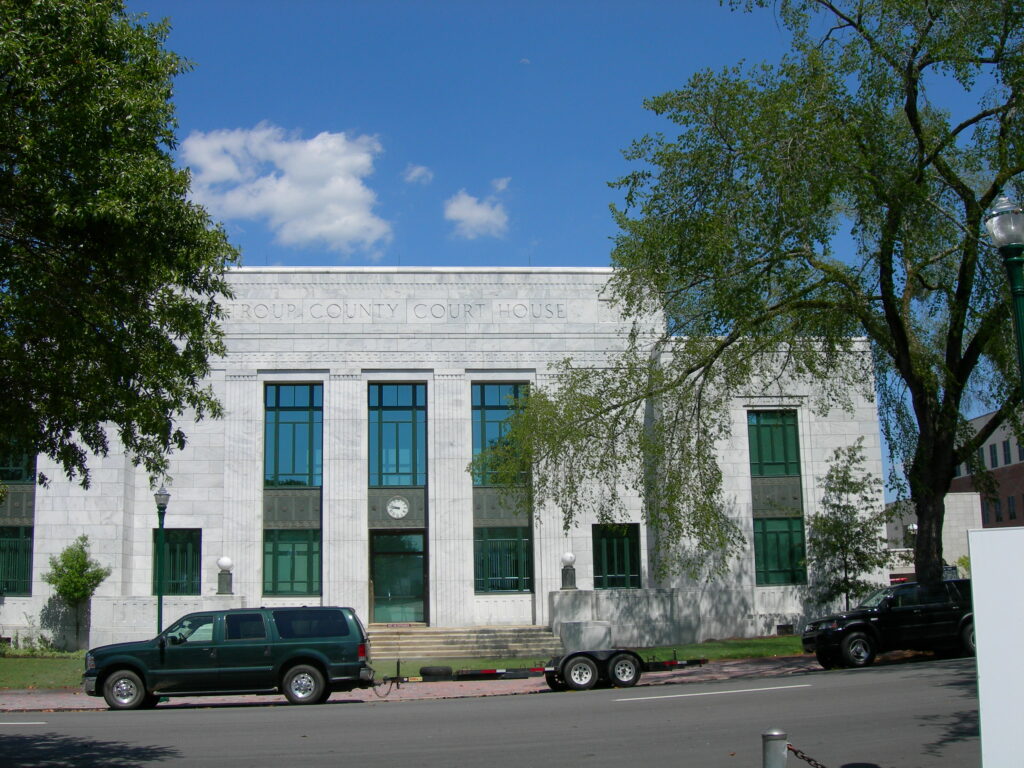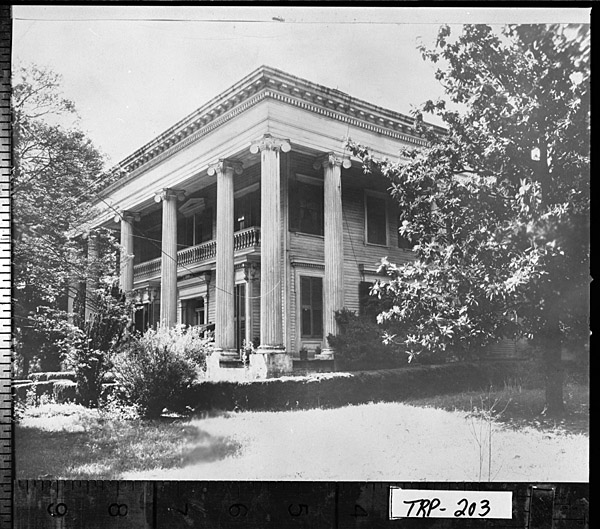Troup County, Georgia’s sixty-third, was established on the border of Alabama, along with four other counties, by an act of the state legislature in 1825. Georgia governor George Troup, for whom the county was named, signed an act organizing the former Creek Indian lands into counties.
As one of its first official acts, the new Troup County government selected a site for the county seat. They chose a location near the geographic center of the county and named the town after the Chateau de LaGrange, the country estate of the Marquis de Lafayette, a French general and hero of the American Revolution (1775-83). LaGrange was incorporated in December 1828. Two other cities, West Point and Hogansville, are located in the county. West Point, in the southwest corner along the Alabama border, was incorporated under the name Franklin in 1831; the legislature changed the town’s name in 1832. Hogansville, in the northeast portion of the county, was incorporated in 1870.

Troup County, which comprises 414 square miles, prospered in the nineteenth century as an agricultural area with rich soil watered by the Chattahoochee River and its tributaries. Growing into a center of commerce, government, and education, LaGrange, supported two female colleges and a male university. One of these schools, LaGrange College, was founded in 1831 and continues to serve the area as a coeducational Methodist-affiliated institution with more than 1,000 students. Beautiful homes and gardens, several of which are now part of historic districts or are listed individually on the National Register of Historic Places, were built in the city.
The Civil War (1860-65) found Troup County residents ready to serve the Southern cause. Located along the Atlanta and West Point rail line, which remained open almost until the end of the war, LaGrange served as a hospital center for the Confederacy. Leading statesman and U.S. and Confederate senator Benjamin Hill lived there. His home, Bellevue, built from 1853 to 1855, is a National Historic Landmark. The Battle of West Point occurred at nearby Fort Tyler along the Georgia-Alabama line on April 16, 1865. The following day a corps of ladies, calling themselves the Nancy Harts in honor of Nancy Hart, the Revolutionary War heroine from Georgia, defended LaGrange from an invasion of Union troops led by Colonel Oscar H. LaGrange. The Nancy Harts gave up their arms when the colonel promised not to burn their homes and town.

Led by such families as the Callaways, Dunsons, Truitts, Laniers, and Huguleys, Troup County entered the industrial era of the “New South” by the late nineteenth century. During this time the county’s economy centered on textile mills. Since the 1960s Troup County has successfully attracted diversified industry from around the world, including plants from Japan and Germany. In October 2006 Kia Motors Corporation, a Korean automobile manufacturer, broke ground in West Point for its first factory in the United States. The plant opened in February 2010 with an initial workforce of 1,200 employees. Another large employer in the county is Interface, a manufacturer of commercial carpeting.
LaGrange and Troup County have within their borders West Point Dam and Lake, constructed primarily for flood control in the 1960s and 1970s by the U.S. Army Corps of Engineers. West Georgia Medical Center is the leading hospital in the county, and West Georgia Technical College serves students in the area. The county is home to an impressive variety of art and cultural institutions, including museums, theaters, ballets, and orchestras.

According to the 2020 U.S. census, the population of Troup County was 69,426.









